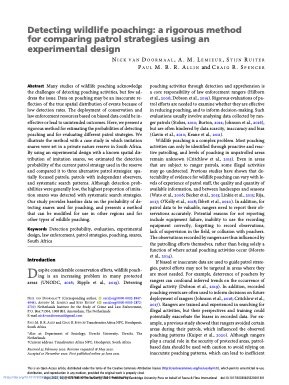By Jacob Phelps, Steven Broad, Jennifer Mailley
KEY TAKEAWAYS 1. Illegal wildlife trade (IWT) persists in contravention of laws specifically aimed to address negative impacts of over‐exploitation of nature, one of the most critical threats to the world’s biodiversity. 2. By reducing and otherwise negatively impacting populations of wildlife species, IWT undermines the functioning of ecosystems, with significant potential to harm related natural processes – including those affecting climate. 3. The causal chains that demonstrate and explain these links are diverse, complex, and little researched and they are important to long‐term climate stability and mitigation of climate change impacts. 4. Some key pathways linking IWT, ecosystems and climate:
IWT is both a reflection of weak environmental governance, and an exacerbating factor to it. It is often associated with ineffective regulation, 6. Given the importance of climate stability and the long‐term persistence of carbon stocks, adopting broader time horizons and a more holistic view that considers biodiversity is important to climate mitigation and stability. Adopting this type of longer, broader view that recognizes the centrality of biodiversity to many ecosystem processes highlights the clear need for improved governance of wildlife resources and recognizes the need for strong justice system responses to environmental crimes. 7. It is critical to keep in mind that this relationship works in both directions. As climate change impacts take shape, natural resource conflicts will worsen as people and wild species adapt to evolving living conditions. It is very likely that this will lead to new incentives for and patterns of illegal wildlife trade, and in turn new interventions to contain the resulting environmental harm. 8. The links between IWT, biodiversity and climate are still under researched and not well understood. This Research Brief is the first effort to frame these linkages, which are important to understand how policies aimed at addressing IWT, biodiversity and climate can be better integrated.
Vienna: United Nations Office on Drugs and Drime. 2022. 20p.




